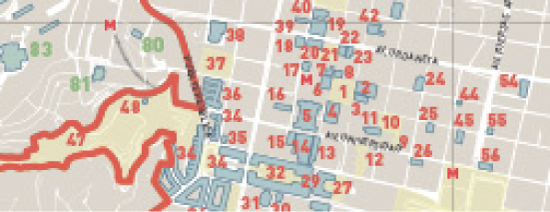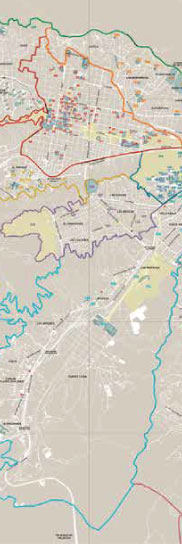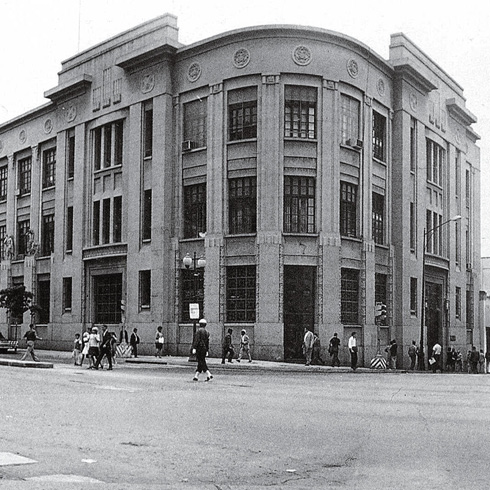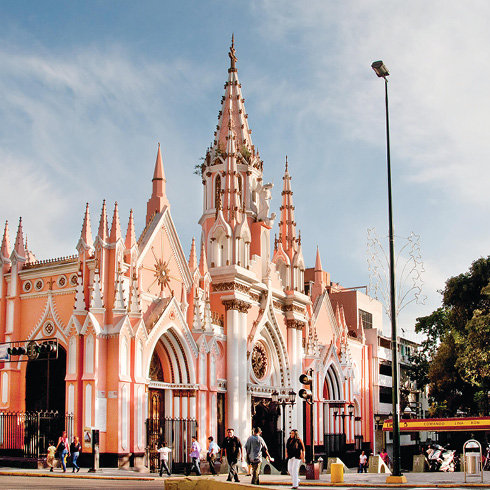DDN
The plaza, in front of Santa Capilla and next to the General Archive of the Nation, in the northeast quadrant of one of the founding squares, with the corner open, occupies the site of the former San Mauricio Barracks (eighteenth century). Later, the north area would be occupied by the Guipuzcoana Company and the south by an artillery barracks. In 1910, during Juan Vicente Gómez’s government, construction of the national telegraph and telephone building was decreed on this land, to celebrate the first centennial of the Independence. The «L» shaped plaza has two accesses with stairs, to bridge the almost four-meter difference in level with the AvenidaUrdaneta and a tree planted esplanade to the southeast. The northeast corner has a rectangular fountain with a reflecting pool, while in the north face there is an access to an old brick tunnel with a plaque that says: «Secret military passageway that, according to tradition, joined this place, where the artillery park of San Mauricio used to be, below the Royal Treasury, with the south bank of the Catuche river, near La Trinidad bridge; it is said that governor Castellanos fled through it in disguise, when Juan Francisco de Leon, protesting against the Guipuzcoana Company, seized Caracas on April 20, 1749». This public space exhibits a bust honoring the memory of poet Andrés Eloy Blanco.

DF-20







